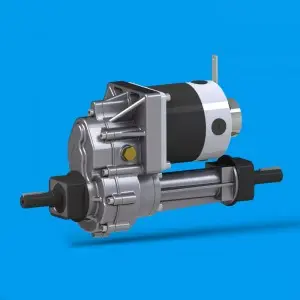When it comes to cars, their intricate inner workings can be fascinating. One of the important components that determines vehicle performance is the transaxle. A transaxle is essentially a transmission and axle combination that provides rotational power to the wheels. However, car enthusiasts have long been convinced that transaxles cause a significant reduction in drivetrain power. In this blog, our goal is to debunk this myth and reveal the true potential of the transaxle.
Learn about transaxles:
Before we delve into the details of transaxles and power reduction, let’s first understand their primary functions. In a typical vehicle configuration, the engine, transmission, and differential are separate units. In contrast, a transaxle integrates the transmission and differential into a single unit, enhancing the vehicle’s overall weight distribution and reducing overall weight.
Power outage misunderstanding:
One of the common misconceptions about transaxles is that they cause a significant reduction in driveline power. While there is always some loss in power transmission, the losses caused by the transaxle are usually negligible. Modern transaxles are precision engineered and utilize efficient gear ratios to minimize power loss during transmission from the transmission to the wheels.
Efficiency advantages:
Transaxles offer several efficiency advantages over traditional driveline setups. By integrating the transmission and differential, power transfer is simplified, thus minimizing energy losses. Additionally, transaxles typically have shorter, more direct power routes, reducing friction and further optimizing power transfer. Therefore, a transaxle can actually improve the vehicle’s overall power efficiency.
Weight distribution and handling:
Another advantage of a transaxle is its ability to improve weight distribution and handling characteristics. By placing the transmission and differential closer to the center of the vehicle, the transaxle allows for better front-to-rear weight balance, improving stability and traction. This redistribution of weight also results in more precise handling and enhanced driving dynamics.
Enhanced performance:
Contrary to popular belief, a transaxle can actually improve a vehicle’s performance. Because the transaxle contributes to weight reduction and efficient power transfer, vehicles equipped with a transaxle typically achieve faster acceleration and better fuel efficiency. For high-performance vehicles, a transaxle helps improve cornering capabilities, making it ideal for sports cars and high-performance vehicles.
Reliability and Maintenance:
Transaxles are designed to withstand high torque and rotational forces, making them a strong and reliable component. The transaxle also requires less maintenance due to fewer individual parts and a simpler configuration than a conventional driveline setup. Simplified maintenance means less downtime and cost-effective service for vehicle owners.
Apparently the notion that a transaxle results in a significant reduction in driveline power is nothing more than a myth. In fact, transaxles offer several benefits, including enhanced weight distribution, improved handling and efficient power transfer. Technological advances in transaxle design have made it a reliable and efficient component in modern vehicles. So the next time someone claims that a transaxle harms dynamic performance, rest assured that the opposite is true. The transaxle is a testament to automotive engineering achievement, optimizing power transfer and delivering an exciting driving experience.
Post time: Oct-06-2023


